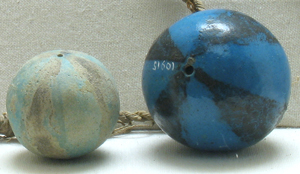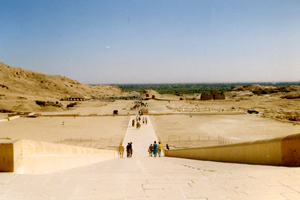
Descending Djeser Djeseru
Left: the view from the top of the stairs leading down to the lower terrace of Hatshepsut's temple. In Hatshepsut's time there was a garden at the bottom, with pools, incense trees, and flowers. There was also a wall surrounding the whole complex.
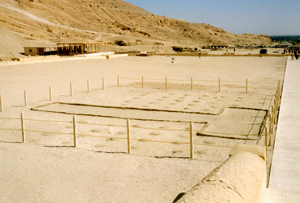
Right: what remains of one of the two T-shaped pools, and some stumps of incense trees. It is unlikely either the pools or the stumps date from Hatshepsut's time, however.
 The
circumpolar stars
The
circumpolar stars
According to some of the religious writings of the Egyptians, after death pharaohs would ascend to the stars to be with the gods. These stars they called the 'imperishable ones' - the stars which never leave the sky, in other words the stars which never die. This was a suitable place to go for a pharaoh who wanted to live forever in the afterlife.
Nowadays we call these stars the circumpolar stars. During the night all the stars in the sky move around a point directly above the north pole, because of the spinning of the earth. This means that most stars at some point disappear below the horizon. Those above the north pole, however, do not vanish. The time lapse photograph right shows these stars.
Near the middle of the circle you can see Polaris - also called the Pole Star.
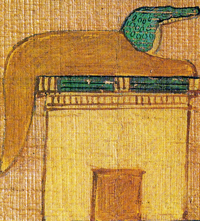
Sobek
Sobek was a god who took the form of a crocodile, or a man with a crocodile's head. He was usually worshipped in areas where there were lots of crocodiles. The Egyptians wanted to please him with prayers and offerings so he would prevent his creatures from eating them. The Nile crocodile was a very dangerous creature which took many lives - although not as many as hippos did, and still do. Sobek was seen as the Lord of the Waters - the god of Death in the Water - and the god of revenge.
Sobek's main temples were at Kom Ombo and at Medinet el-Faiyum in the marshy Faiyum region. His temples usually had a pool where sacred crocodiles were kept. When I was at Kom Ombo I even saw some crocodile mummies!
Read about The Parthenon
Children's Games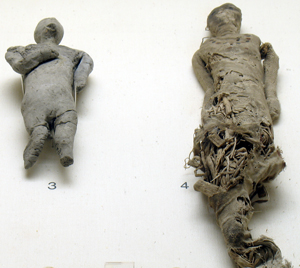
Children in Egypt played games as children do today, but with much simpler toys. They had dolls, balls, sticks and hoops. Jumping games (like leapfrog) were popular. Grown-ups had a board game called senet and ivory throwing sticks which worked like dice. Here are a couple of pictures of children's toys from the Manchester Museum .
